Integrated music lessons can help you provide a more connected and immersive experience for your music students. We want to help you understand what and integrated music lesson is and how you can teach one yourself.
Last week, we announced the launch of our Integrated Music Teaching model which focuses on making connections between the creative elements of lessons and the repertoire and scales students are already learning.
Today, we’re going to explore the “How to” of Integrated Music Teaching by:
For more information about Integrated Music Lesson, listen to this IMT podcast.
In order to successfully implement the IMT model in your studio, you’ll need to acknowledge three key principles we call our pillars. They are:
“When students choose their own piece, there is an 11 fold increase in productivity.” Professor Gary McPherson, Head of Melbourne Conservatorium of Music (from lecture notes).
But allowing them to choose from a selection of repertoire pieces is only one way of giving students increased autonomy.
I prefer to look at the bigger picture of “Why is the child/adult taking lessons? What is their goal? What would they most love to be able to do?” when considering how student-centered my approach can be.
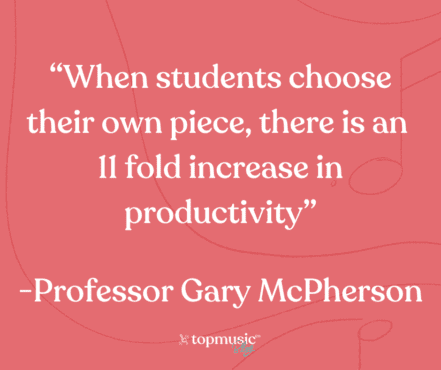
So let me ask you a simple question: “What are the key learning outcomes of your music lessons?”
That is, what do you want students to be able to do when they “finish” lessons with you?
Knowing the outcomes will determine how you teach, what you teach and how you assess.
My prediction is that you’ll say something like, “have a love of music,” which is fantastic.
But let’s go deeper and think about how you are going to achieve that:
Here’s a list of some of the goals I think are crucial for students to be successful, lifelong music-makers (not just listeners/appreciators):
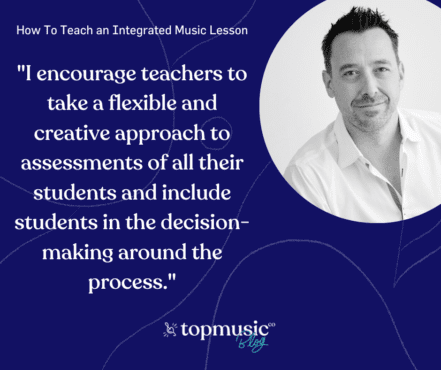
The point is that while we have our own set of goals we feel it’s important for students to achieve, unless we ask them about their own aspirations, we’ll never quite be on the same page.
Giving students this choice, that is autonomy in their learning, is what I feel is at the core of a student-first approach.
It’s also backed by research.
Self determination theory suggests that there are three key psychological needs for students to feel motivated about what they are doing:
Think about how you learn best. If you began learning a new skill today, would you like having a curriculum set in stone and feel like you’re just a cog in a machine?
Or would you like to have agency in the direction of your learning?
If you’re like most adults, you’ll always opt for the latter.
It’s why one of the key principles of the assessment for our new Certificate of IMT is that teachers have choices in the focus of their assessment.
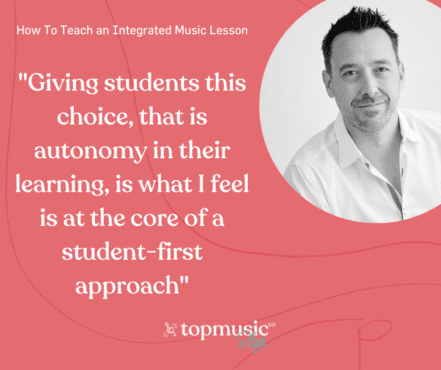
Clearly, different levels of student-first are required at different ages and stages.
Adults should have almost total control over what they learn for maximum motivation and engagement. 6 year olds, however, should have a curriculum mostly determined by a teacher, with some room for choices over pieces, exercises, activities, etc. in a similar way to the options you’d give a toddler versus a teenager.
The other element to a student-first approach is to be willing to capture a student’s interest and enthusiasm at the very beginning of lessons with fun, creative activities.
This is also important when a student might need a new boost in their motivation as so often happens around the tween and teen years.
If we blithely carry on with business as usual, this is when we can easily lose students.
I read an interesting quote recently. Do you agree with it?
“I was once told by a senior brass teacher during a training day: ‘Don’t worry too much about developing technique or reading music – the most important thing is that students can play a few tunes they can recognise.'”
I profoundly disagreed.
“Music lessons cost parents a lot of money. If you were paying good money for football coaching, you’d expect your child to be developing specific skills, techniques and training drills from a professional – very different from having a kick-around in the park with your mates.”
I profoundly disagree!
Sport and music are actually quite different.
For the most part, a basic ability to swing a golf club or kick a soccer ball is achievable for most able-bodied people without coaching.
Sure, refining these techniques takes years of instruction and practice, but initially, most people can enjoy instant-gratification from their desired sport with very little instruction, from getting a golf ball into a hole, or scoring a goal.
Music is different.
Students picking up an instrument for the first time will not be able to achieve the same sense of satisfaction, taking quite a few weeks to be able to make even the most rudimentary sounds with a high level of technique.
Because of this extended barrier to entry, music has a high rate of attrition and it’s getting worse.
The TikTokification of our children is leading to ever shorter attention spans and most children starting music lessons simply don’t know just how long it takes to be good.
And this leads to quitting too soon.
Especially if the initial focus is solely on technique.
Sure, there will be the 1% of students with committed parents who are happy to focus on perfect technique and performance from the start without losing interest.
But these students are in the tiny minority in my experience.
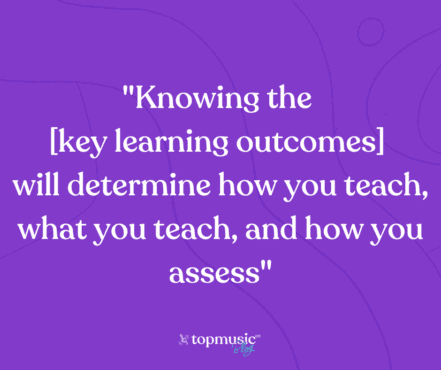
What we need to do in music is get just the basics down – how to hold the instrument, sitting height if at the piano, basic arm and hand position/bow movement/embouchure.
Just enough to get started making sounds.
Then, we need to hook them into lessons to ensure they don’t give up too soon.
That’s what being student-first is all about.
When you take a student-first approach to teaching, you will naturally need to reconsider how you go about assessing your students.
Put simply, the traditional, formal recital might not be the best way to assess and strive toward student progress for all students.
And that’s OK, because recitals aren’t necessarily the best assessment strategy.
While there’s nothing wrong with recitals per se, being flexible with which students are required to participate can really increase motivation.
If you have students who are mainly working on composing, or writing film scores, or for whom live performance is a terrifying experience, perhaps there are other ways of assessing them.
Here are a few possibilities:
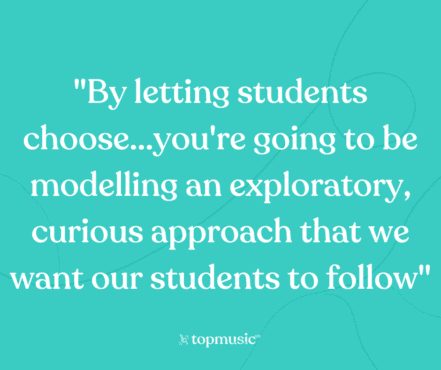
If you are running a traditional recital, try “softening the edges” a little and making it more accessible:
I encourage teachers to take a flexible and creative approach to assessments of all their students and include students in the decision-making around the process.
Ever since I wrote a blog post titled “What I’ve learnt from asking more questions in music lessons” I’ve enjoyed improving my ability to use questions to challenge students and engage them more deeply in critical thinking.
Many teachers will have experienced the opposite in their own lessons – their teachers most likely told them what to do, how to play and corrected their mistakes without so much as a second thought.
They would’ve been told how to interpret and perform music “correctly” and not given them a whole lot of options in the process.
But in today’s modern students, we can do so much better.
By asking more open-ended questions and showing them how we’re thinking, we can engage their imagination and creativity and build curiosity.
My simple mantra is, if you can avoid dictating by letting students choose or asking them questions, you’re going to be modelling an exploratory, curious approach that we want our students to follow.
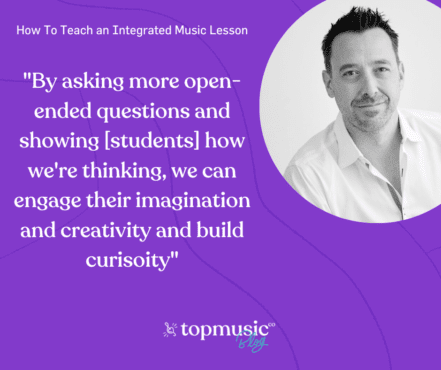
Ask questions as much as possible.
This is a pillar of the process – you want to get students thinking and starting to connect things in their minds.
This will build curiosity.
For example, here are some curiosity-building questions you can explore with students during an integrated music lesson:
I share lots more on my blog post about this.
Remember that even though you might immediately know the “right” answer to a question or the “right” way to play a phrase, your student may need to think about it through their exploration and your questioning before they reach the same conclusion.
That’s what it means to question for curiosity.
Hopefully your brain is now buzzing, full of ideas and inspiration.
Incorporating The Integrated Music Teaching approach into your lessons will really help your students become more creative and curious musicians.
Or maybe while reading through this you’ve realised that you actually already incorporate some of these elements, but have never thought about how you can connect them all together to create a more immersive experience for your students. But this is still just the beginning.Stay tuned for more articles and podcasts about Integrated Music Teaching.
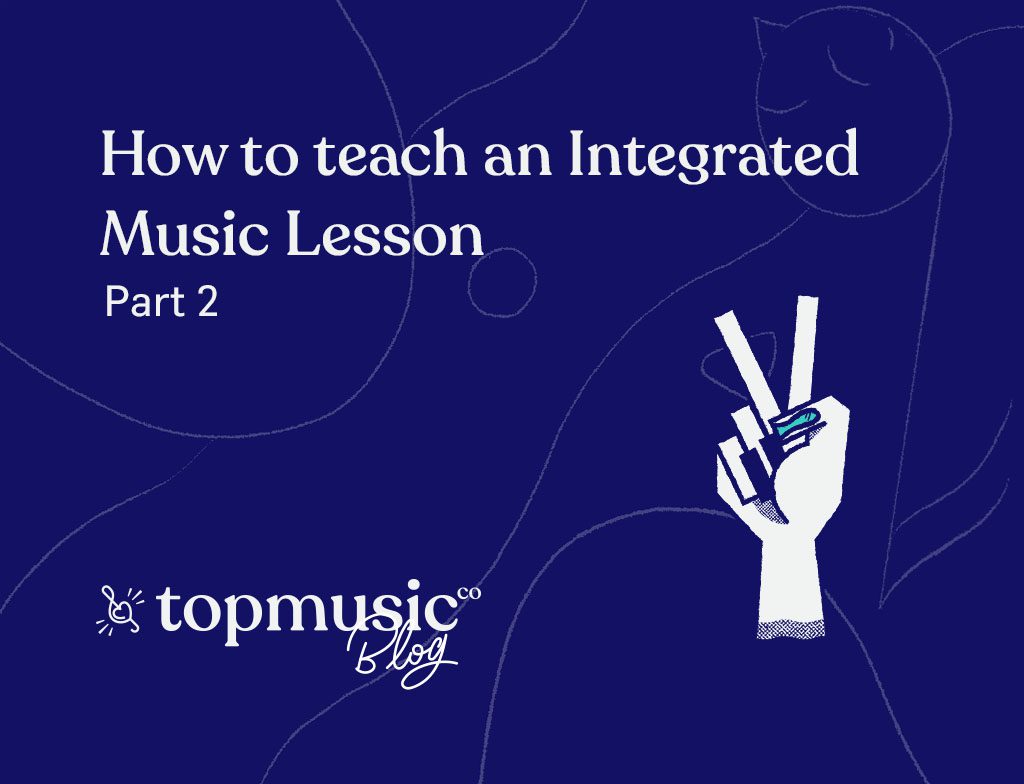
Rebecca Stewart says:
All this resonates strongly with me – thanks Tim. Am going to recommend that my apprentice teacher studies this article!
Tim Topham says:
Ahh thanks Bec! I hope it helps 🙂 We’ve building more resources at topmusic.co/integrated too 👍